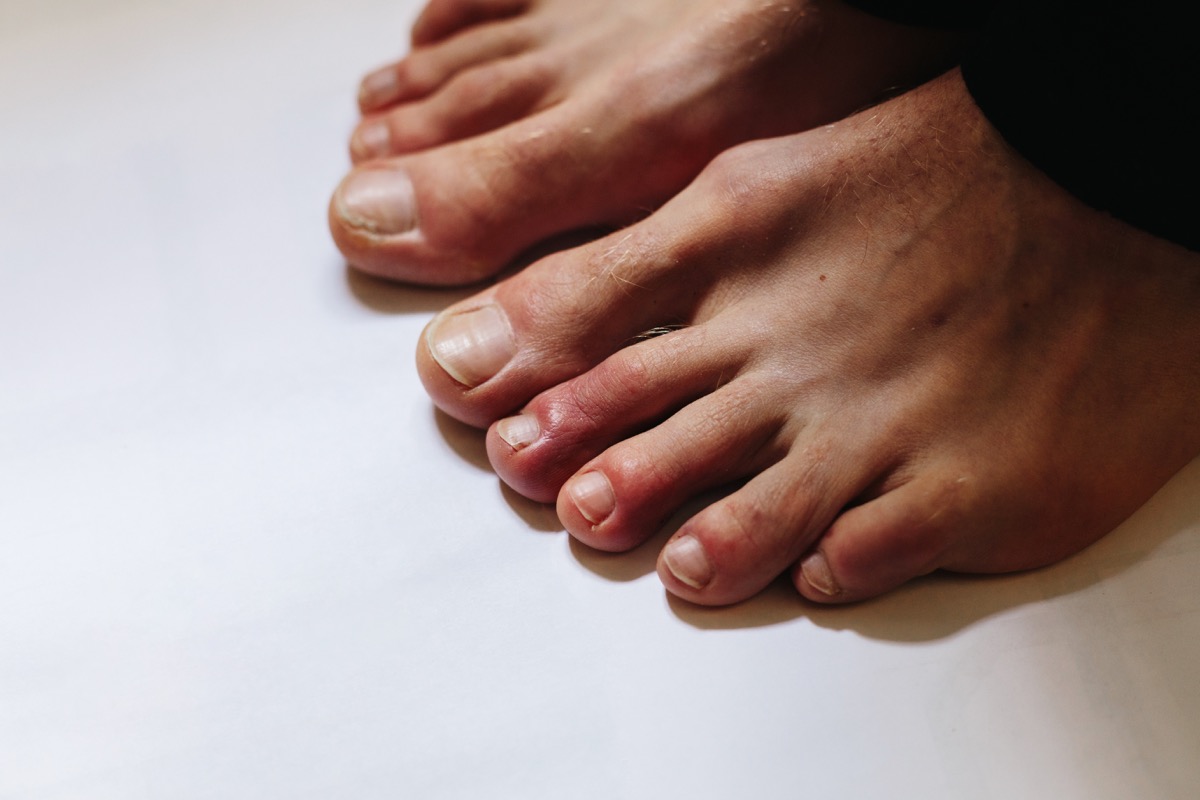The new study published by King’s College London (KCL) used two methods to study skin rashes. First, researchers used data from the COVID Symptom Study app and “observed that 8.8 percent of the swab positive cases (total: 2,021 subjects) reported either a body rash or an acral rash, compared to 5.4 percent of those with a negative swab test.” Additionally, skin rashes were found in 8.2 percent of users who were not tested but reported at least one classic COVID-19 symptom, according to the study. To gain a deeper understanding, researchers also looked at an independent online survey of 11,546 people with rashes and found that in “17 percent of swab positive cases, the rash was the initial presentation. Furthermore, in 21 percent, the rash was the only clinical sign.” In a write-up of the study by KCL that identifies rashes as a “key symptom” of COVID, lead author Veronique Bataille, MD, PhD, said, “Many viral infections can affect the skin, so it’s not surprising that we are seeing these rashes in COVID-19. However, it is important that people know that in some cases, a rash may be the first or only symptom of the disease. So if you notice a new rash, you should take it seriously by self-isolating and getting tested as soon as possible.” The study found that coronavirus related rashes most commonly manifest in three different ways. A rash that feels like “prickly heat” and resembles chicken-pox—scientifically known as an erythematous rash—was found to be the most common (41 percent of rashes seen), according to KCL. This rash manifests as “areas of small, itchy red bumps that can occur anywhere on the body, but particularly the elbows and knees as well as the back of the hands and feet. The rash can persist for days or weeks,” per KCL.ae0fcc31ae342fd3a1346ebb1f342fcb The first report on potential skin manifestations of COVID found a high volume of similar erythematous rashes in Italy. The study, published by the Journal of The European Academy of Dermatology and Venereology (JEADV) in late March, found that 15 percent of patients experienced an erythematous rash. And for more COVID skin symptoms, check out these 7 Signs Your Skin Is Trying to Tell You You Have Coronavirus. A rash that is reminiscent of hives—formally called urticaria—was found to be the second-most common rash among coronavirus patients (28 percent of rashes seen). KCL describes this rash as a “sudden appearance of raised bumps on the skin which come and go quite quickly over hours and are usually very itchy. It can involve any part of the body, and often starts with intense itching of the palms or soles, and can cause swelling of the lips and eyelids. These rashes can present quite early on in the infection, but can also last a long time afterwards.” The JEADV study found that only 3 percent of rashes reported were urticaria. And for more up-to-date information, sign up for our daily newsletter. This rash is formally known as chilblains, and according to KCL, it demonstrates itself as “reddish and purplish bumps on the fingers or toes, which may be sore but not usually itchy. This type of rash is most specific to COVID-19, is more common in younger people with the disease, and tends to present later on.” Additionally, according to Weill Cornell Medicine Joanna Harp, MD, “The majority of COVID toe patients seem to be completely asymptomatic or have only mild symptoms.” And for more on the odder coronavirus symptoms, learn The 7 Strangest Coronavirus Symptoms You Need to Know About.


